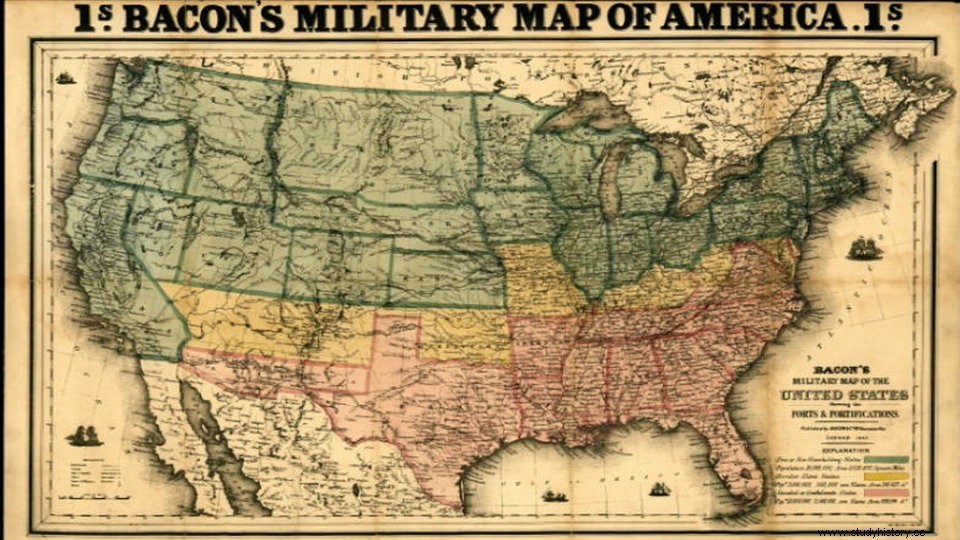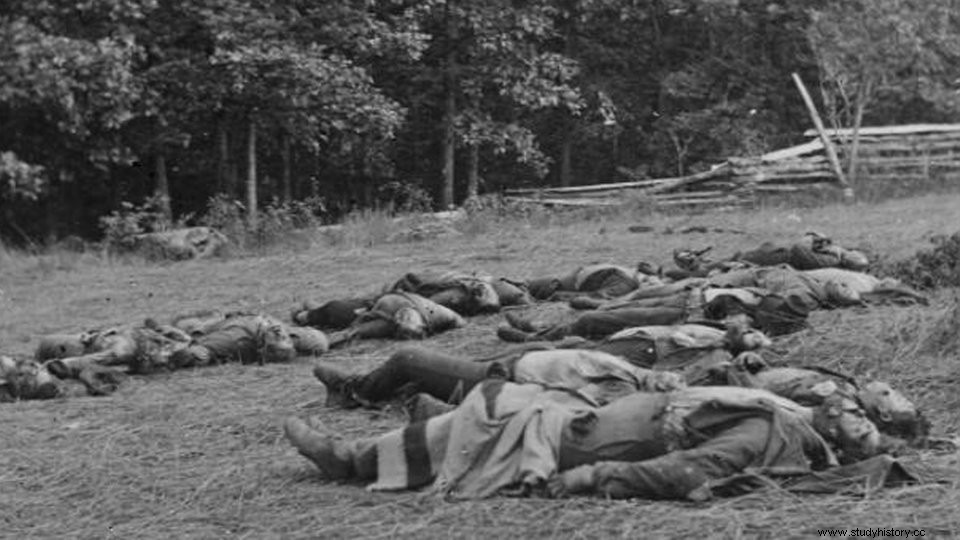The American Civil War lasted four years. More than 600,000 soldiers were killed, thriving cities were razed to the ground and entire regions devastated. A high price, but there was also a lot at stake:the unity of the country and the abolition of slavery.
US Independence
In 1773, riots broke out in the British colonies of North America. The population rebelled against taxes that were to be imposed on them by the government in London. The protest turned into a struggle for civil liberties.
On July 4, 1776, the 13 North American colonies declared their independence and founded the United States of America - the date is still celebrated as "Independence Day" in the USA. The British sent troops to put down the uprising militarily. The struggle for freedom raged on for seven years, in which the British finally lost.
In 1788 the Constitution of the United States of America came into force. A nation emerged whose constitution granted sovereignty to the individual states. The decision for or against slavery was also up to the states.
Attracted by dreams of great fortune, many immigrants reached the United States. By the mid-19th century, the United States had risen to become a world power, but within its borders troubles were beginning.
Slavery - yes or no?
20 million people lived in the northern states and almost seven million in the south. The people in the north were progressive, in the south they thought conservatively. The north had developed into a booming industrial conurbation, the south was dominated by agriculture.
The rich landowners in the south earned their money mainly from the cultivation and export of cotton. However, they could only run the huge farms profitably because they had cheap labour.

Slaves in the Southern States
Almost four million black slaves were forced to work in the cotton fields. In the North, slavery had been abolished and the example of the modern world had been followed.
With great political pressure, the North wanted to get the South to abolish slavery as well. Abandoning slave labor, however, would have plunged Southern farmers into an economic fiasco.
Lincoln's inauguration as President
There was heated debate in the US Senate over the slave issue. Voices were raised in the South calling for secession from the Union. The conflict was also fueled by the forthcoming presidential elections. Abraham Lincoln was one of the most promising candidates and an opponent of slavery.

The election of Abraham Lincoln as US President was a trigger for the war
When Lincoln was elected 16th President of the United States in November 1860, political consequences were immediately drawn in the South. South Carolina declared its exit from the federal government in December.
In February 1861, the representatives of six slave states met and decided to form the "Confederate States of America". Five other states joined this confederation a short time later.
The beginning of the war
Richmond (Virginia) became the capital of the Confederacy and Jefferson Davis was appointed President. The breakaway states drew up a constitution which in most respects coincided with that of the Union. However, ownership of slaves was expressly protected.
In the South, expropriation of federal property began, including military installations. The pro-Union garrison at Fort Sumter, a fort in the port of Charleston, South Carolina, resisted surrender to the South.
On April 12, 1861, Confederate troops took the fort under artillery fire. This military action was the prelude to the bloodiest conflict on American soil to date.

The United States is divided
After the surrender of Fort Sumter, Abraham Lincoln raised an army of 75,000 volunteers and advanced towards the south. He was hoping to bring the rebels to their knees with a quick victory. But the South was prepared for a military confrontation.
The Confederates not only had highly motivated troops, but also better trained officers. Therefore, the Southern Army was able to win the first battles of the Civil War. But the tide soon turned in favor of the North.
Technology as a decisive factor
After the first lost battles, Lincoln had set his war machine in motion. New recruits were constantly being trained and brought to the front.
In addition, the powerful armaments industry in the north supplied the troops with supplies and new weapons. The railway proved to be extremely important as a means of transport.

Fallen after the Battle of Gettysburg
The South soon had nothing more to oppose to the technical lead of the North. In addition, the Confederates were cut off from supplies by a naval blockade.
After the Union troops had also taken control of another important supply artery of the South with the Mississippi, the defeat of the Confederates was inevitable. July 1863 brought a decisive victory for the North at the Battle of Gettysburg, Pennsylvania.
The war of annihilation
The longer the war raged, the harder and more relentlessly the fighting became. The man-to-man fight had turned into an iron war in which the most modern technology was used.
To gain control of the Mississippi, both sides developed armored gunboats. Forerunners of submarines were also used. Casualties among the civilian population were also deliberately accepted.
On their advance through Southern territory, Northern troops cut a nearly 100-kilometer-wide swath of destruction. People and livestock were killed, farms burned, cities like Atlanta and Charleston destroyed.
The American Civil War had become a war of annihilation that was fought by any means necessary.

Charleston destroyed by Union troops
The end and the aftermath
The South was finally bled dry. The final decisive battle was fought around the capital of the Confederacy. The commander-in-chief of the Union forces, General Ulysses S. Grant, had fought his way to Richmond with his troops and besieged the city.
General Robert Edward Lee, commander-in-chief of the Confederate Army, decided to surrender on April 9, 1865. This officially ended the war. In the end, 600,000 people lost their lives and tens of thousands were mutilated. The economic damage caused by the destruction was enormous.
Lincoln, reelected President in 1864, had saved the Union. But he had not conquered the hatred between the northern and southern states. He died on April 15, 1865 from the bullets of a fanatical Southerner.

Southern fanatic Booth shoots Lincoln
Lincoln's goal of abolishing slavery in all states of the Union was realized shortly after his death.
It took until well into the 1870s for the southern states to recover economically from the aftermath of the war and for them to be reintegrated into the Union with equal social and political rights.
The Ku Klux Klan was formed shortly after the war. After the war, members of this racist secret society took action against entrepreneurs from the North, who were said to want to profit from the defeat in the South.
The clan also hunted down former slaves who had been given political offices in the South. There is still a noticeable gap between northern and southern states.
